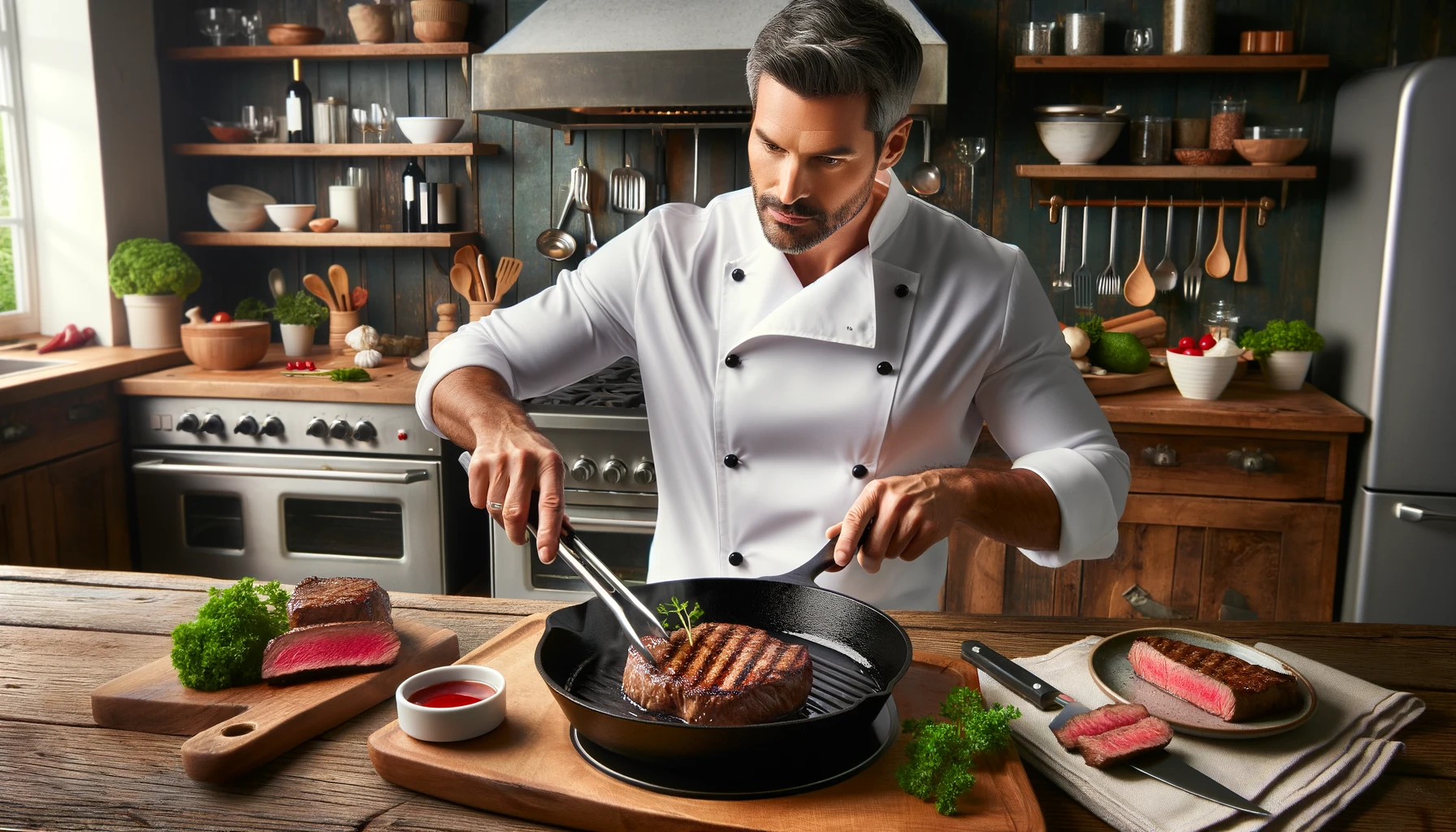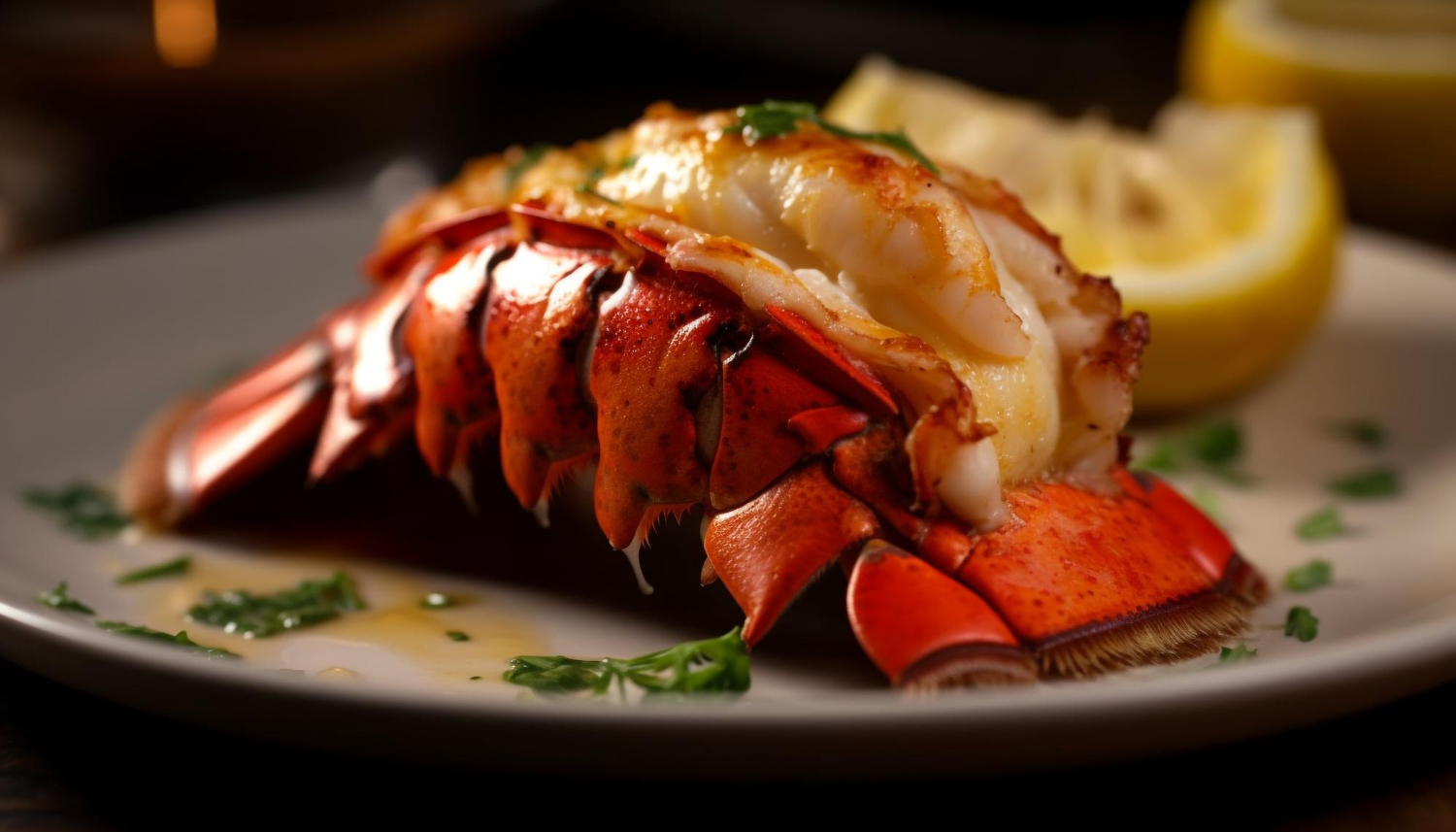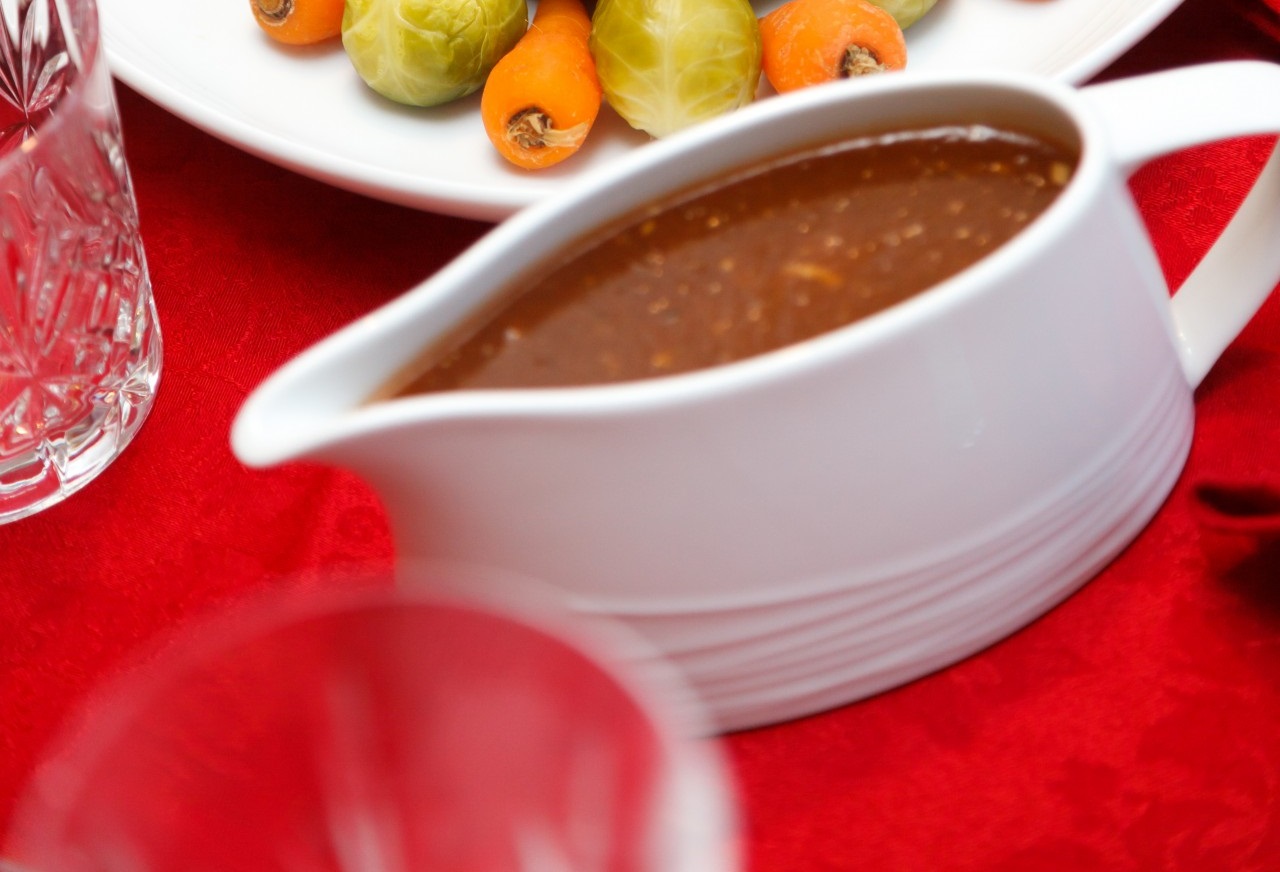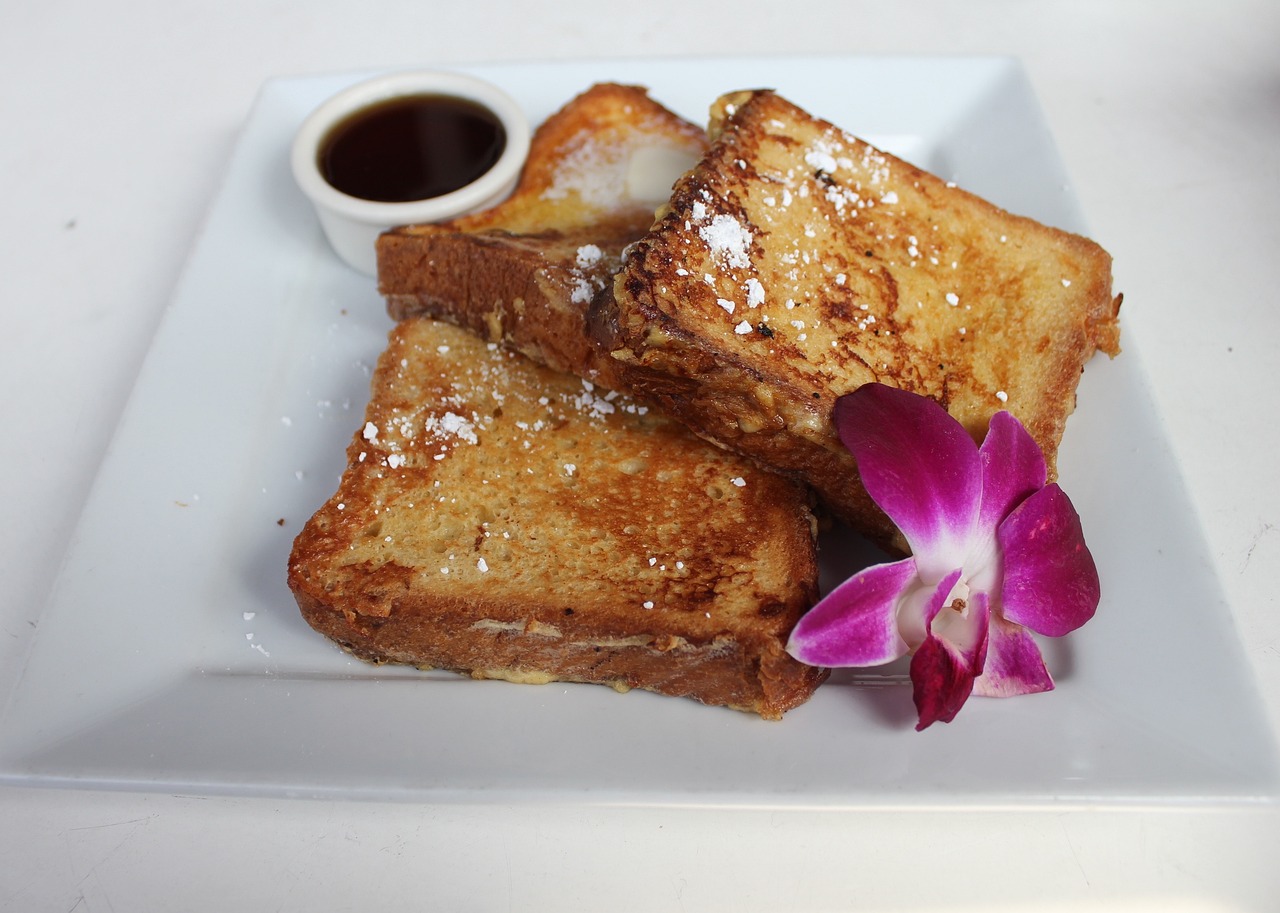Steak — the ultimate culinary symbol of sophistication, luxury, and (let’s be real) confusion. If you’ve ever found yourself staring blankly at the butcher’s display, wondering whether you should remortgage your house to afford the fanciest cut, you’re in the right place. But fear not, dear reader, for I am here to guide you through the treacherous journey of cooking a steak that’s worth its weight in gold. Or at least, worth the Instagram post.
Steak 101
Before we dive headfirst into the sizzling world of steak cooking, let’s take a moment to appreciate the art, the science, and the downright mystique of the steak.
The Cut of Your Jib
Not all steaks are created equal, and choosing the right cut is like choosing a life partner — you better know what you’re getting into. Each cut has its own personality, its own quirks, and its own ticket price at the Meat Gala.
- Ribeye: The Robin Hood of steaks — rich, luxurious, and not afraid to show it. It’s marbled like a Renaissance painting and tender like a love ballad. But beware, for it is not for the faint of heart (or the light of wallet).
- Filet Mignon: The Beyoncé of beef. It’s petite, it’s tender, and it’s surrounded by a legion of fans willing to pay top dollar for a moment in its presence.
- New York Strip: The James Bond of the beef world — smooth, classic, and never out of style. It’s leaner than the Ribeye but still packs a flavorful punch.
- Sirloin: The blue-collar hero. It’s affordable, reliable, and ready to work hard for your taste buds.
- T-Bone: The Frankenstein’s monster of steaks — it’s a New York Strip on one side, a Filet Mignon on the other, and a bone in the middle playing referee. It’s the best of both worlds, if you’re into that sort of thing.
Aging: Like Fine Wine, But Beefier
Aging is to steak what wizardry is to Harry Potter — a little mysterious, a little intimidating, but oh-so magical. There are two types of aging: dry and wet.
- Dry Aging: This is the Hogwarts School of Witchcraft and Wizardry for steaks. The meat is left to hang out in a controlled environment for weeks, losing moisture and concentrating flavor. It’s like sending your steak to flavor boot camp.
- Wet Aging: This is the community college of steak aging. The meat is sealed in a vacuum-packed bag, allowing it to marinate in its own juices. It’s faster, it’s cheaper, and it still gets the job done.
Marbling: The Art of Fat
Marbling is the Mona Lisa’s smile of the steak world — subtle, intriguing, and a surefire sign you’re dealing with a masterpiece. It’s the little flecks of fat running through the meat, and it’s what turns a good steak into a life-changing experience. The more marbling, the more flavor, tenderness, and chances you’ll make an embarrassing noise while eating.
Now that you’ve been properly introduced to the world of steak, it’s time to roll up your sleeves, preheat your sense of adventure, and prepare to tango with a hunk of beef like never before. Now, onto the ingredients — you didn’t think you’d get away with just a piece of meat, did you?
Ingredients:
- A steak (obviously): Choose a cut that screams “I’m expensive and complicated!” Popular choices include Ribeye, Filet Mignon, or a New York Strip. Roughly 8-10 oz (225-285g) per person, or just a whole cow if you’re feeling particularly ambitious.
- Salt: About as much as you’d throw over your shoulder for good luck, but actually onto the steak. Let’s say 1 teaspoon per steak, but really, just wing it.
- Black Pepper: Just enough to make you sneeze. Precision is key here, folks. (Just kidding, it’s not. Just grind some pepper onto the steak.)
- Olive Oil: Enough to make the pan look generous, but not so much that you’re frying the steak. We’re not making steak-flavored olive oil here. A tablespoon should do the trick.
- Butter: Because why have a healthy steak when you can have a delicious steak? A knob. Yes, that’s a technical term.
- Garlic: Optional, but highly recommended if you’re looking to ward off vampires or potential kisses. One clove, smashed, unless you’re feeling rebellious and want to add more.
- Thyme/Rosemary: Just pick whatever’s not dead in your herb garden. A sprig or two should suffice.
- Love: Just kidding. Steak doesn’t need your love; it needs your undivided attention and possibly a sacrifice to the steak gods.
Grilling, Thrilling, and Occasionally Overkilling
Now that you’ve gathered your ingredients, it’s time to embark on the epic journey of steak cooking. Brace yourself, for you are about to become a Steak Master™, or at least a Steak Adequate™. Buckle up, because it’s about to get hot in here.
Step 1: The Room of Requirement
Before you even think about touching that steak, let it sit at room temperature for about 30 minutes. Why? Because we’re not savages, that’s why. Cooking a cold steak is like trying to toast bread with a flashlight — it just doesn’t work well. Give the meat some time to loosen up and get ready for the party.
Step 2: The Spice is Right
Grab your salt and pepper. It’s time to season that steak like you’re trying to exorcise a demon. Make it rain salt and pepper. Both sides, don’t be shy. You want to create a crust that would make a bread baker jealous. Remember, we’re not here to make friends; we’re here to make steak.
Step 3: The Pan’s Labyrinth
Put your pan on the stove and turn the heat up to “Is this too high?”. Once it’s hotter than the surface of the sun, add your olive oil. You’ll know it’s ready when you can feel your eyebrows singeing.
Step 4: Steak’s On a Plane
Carefully place your steak in the pan. You should hear the sizzle of a thousand applause. If not, your pan wasn’t hot enough, and you have failed. (Just kidding, it’ll be fine. Probably.) Let it cook for about 4 minutes, resisting the urge to move it around. You’re not making a stir-fry, pal.
But wait, we can’t just talk about cooking time without addressing the elephant in the room: the thickness of your steak. Yes, size does matter (in the world of steak cooking, at least). If you’ve got a steak that’s thicker than a dictionary, those 4 minutes are going to leave you with a raw surprise in the middle. A good rule of thumb is 4 minutes per side for a 1-inch (2.5 cm) steak. Adjust accordingly if your steak has been hitting the gym.
Step 5: The Flip Side
Flip the steak like you’re flipping off your diet plan. Let it cook for another 3-4 minutes for medium-rare, more if you like your steak less “moo” and more “meh”.
And for the love of all that is holy, do not, I repeat, do not keep flipping it. Each flip is a step away from perfection and a step towards “just okay.” You’re not making a pancake; this is steak, and it demands respect.
Step 6: Butter Me Up
Throw in your knob of butter, garlic, and herbs. Spoon the melted butter over the steak like you’re baptizing it in the name of Flavor Town. Feel free to whisper sweet nothings to your steak; it’s been through a lot.
Step 7: The Rest is History
Remove your steak from the pan and let it rest for 5 minutes. Yes, it’s just sitting there, and yes, this is agony, but trust me — it’s worth it. Cutting into a steak right away is like opening a shaken soda can. Don’t be that guy.
Step 8: The Moment of Tooth
After what feels like an eternity, it’s time to slice into that bad boy. Cut against the grain, serve it on a plate (or eat it straight off the cutting board, I’m not your mother), and prepare your taste buds for the ride of their lives.
Congratulations, you’ve just cooked a steak that might make a chef nod in approval before finding something else to critique. Pat yourself on the back, take a photo for Instagram, and remember: you are now a Steak Adequate™. Welcome to the club. It’s an exclusive, greasy, and utterly satisfying place to be. Cheers to you, and your steak.
Pro Tips for Grilling Genius
Now that we’ve conquered the high-steaks game of cooking the perfect beefy delight, let’s round up this carnivorous adventure with some pro tips to ensure your steak game is sizzling hot and sharper than a butcher’s knife.
Tip #1: Let’s Get Thermally Excited
Invest in a meat thermometer, and let the age-old question of “Is it done yet?” become a thing of the past. The internal temperature doesn’t lie. For a medium-rare steak, aim for 130-135°F (54-57°C). For medium, shoot for 140-145°F (60-63°C). And if you want it well-done, well, 160°F (71°C) should do the trick (but seriously, please don’t do that to your steak).
Tip #2: Give it a Rest, Will Ya?
I’ve touched on this before, but it bears repeating: let your steak rest after cooking. This isn’t just a cruel joke to test your patience; it’s science, people! Resting allows the juices to redistribute throughout the meat, ensuring every bite is as juicy as the first. A good five minutes should do the trick, but for thicker cuts, you might want to wait a bit longer.
Tip #3: Cutting Edge Steak Advice
When it’s finally time to slice into that meaty masterpiece, always cut against the grain. Look for the muscle fibers running through the steak and cut perpendicular to them. This results in shorter fibers in each slice, which translates to a tenderer eating experience. Because no one wants to chew their steak until the next millennium.
Tip #4: Butter Them Up
Want to take your steak from great to “Did I just die and go to steak heaven?” Add a dollop of compound butter on top of your steak while it rests. Whether it’s garlic herb butter, blue cheese butter, or some other magical concoction, it’ll melt into your steak, creating a sauce that’s straight-up divine.
Tip #5: Seariously Hot
Ensure your pan is hot enough before you start cooking. A hot pan creates a beautiful crust on the outside of the steak, locking in the juices and flavor. To test the temperature, sprinkle a few drops of water onto the pan. If they sizzle and evaporate immediately, you’re good to go.
Tip #6: Marbling Magic
Choose a steak with good marbling. Those little flecks of fat throughout the meat melt during cooking, basting the steak from the inside and ensuring it’s juicy and flavorful. It’s like having a built-in basting system, and who wouldn’t want that?
Tip #7: Season’s Greetings
Don’t be shy with the salt and pepper. Steak is a thick cut of meat, and it needs a decent amount of seasoning to bring out its best. Think of it as the steak’s suit of armor going into battle against blandness.
Tip #8: The Oil Spill (But the Good Kind)
When choosing an oil for searing your steak, make sure it has a high smoke point. This is not the time for that fancy extra virgin olive oil; we need something more robust, like canola or vegetable oil. You want your pan scorching hot, and using an oil that can handle the heat ensures you won’t set off your smoke alarm and give your cat an unexpected cardio workout.
Tip #9: To Marinade or Not to Marinade?
Here’s a hot take: if you’ve got a high-quality steak, skip the marinade. A good steak needs just salt, pepper, and a little garlic love. Marinades are like cologne; they should complement, not overpower. So, unless your steak is trying to cover up the smell of desperation, let it go commando.
Tip #10: The Rescue Rangers
Got a steak that’s thicker than a plot twist in a telenovela? Sear it on the stove, and then finish it in the oven. This ensures even cooking and prevents the outside from burning while the inside catches up. It’s like having a steak safety net, and who wouldn’t want that?
FAQ: Your Steak, Your Questions
Sirloin is a great starting point. It’s relatively inexpensive, has a good flavor, and is forgiving if you accidentally cook it a minute too long. Think of it as the training wheels of the steak world.
Patience is a virtue, especially in the steak world. Let your steak rest for at least 5 minutes. For thicker cuts, aim for 10 minutes. Use this time to contemplate your life choices or practice your victory dance for when you finally cut into that steak.
Cooking a cold steak is like trying to toast bread with a flashlight — it’s just not going to work out well. Letting the steak come to room temperature ensures even cooking and a juicier result. Trust me, it’s worth the extra 20-30 minutes of waiting.
Unless you have x-ray vision or a psychic connection with your steak, yes, you really do need a meat thermometer. It’s the only way to ensure your steak is cooked to perfection without playing a game of culinary roulette.
Reusing a marinade that’s been in contact with raw meat is like playing food safety roulette, and trust me, you don’t want to be on the losing end of that game. If you want to use the marinade as a sauce, make extra and set it aside before it touches the raw steak.
While it’s possible to cook a steak from frozen, it’s like trying to run a marathon in flip-flops — you’re just making life harder for yourself. Thawing ensures even cooking and a better end result. Plus, it gives you time to mentally prepare for the steak-cooking journey ahead.
While you might be tempted to give your steak a nice oil massage, it’s actually better to oil the pan. This ensures an even coat, prevents sticking, and reduces the amount of smoke produced during cooking. So save the massage for yourself; after all, cooking a steak is hard work.
Ah, the elusive grill marks, the culinary equivalent of a perfect winged eyeliner. First, make sure your grill (or pan) is really hot. Place your steak on the grill at a 45-degree angle to the grill grates. After 2-3 minutes, rotate the steak 90 degrees, and cook for another 2-3 minutes. Flip and repeat on the other side. Voila, you’ve got yourself some Instagram-worthy grill marks.
Absolutely! While the stovetop gives you a great sear, the oven can ensure even cooking throughout. For thicker cuts, sear on the stovetop first, then finish in the oven at 400°F (204°C) until it reaches your desired doneness. It’s like having a steak safety net, and who wouldn’t want that?



